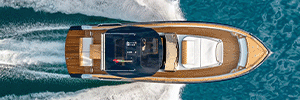Leggi l’articolo in italiano
Fenders? How, when and where must we use them? These questions might seem banal but the matter is essential to prevent serious damages to the hull. People often consider fenders as something fixed, with no adjustment possibilities, or even unuseful. On the contrary, they are extremely important.
Let’s start from the first question. The answer is simple. Fenders must be ready every time we come alongside. Not in the cockpit or in a locker but exposed before approaching to a dock or a berth and before entering a harbour if weather is good or in the most protected waters of the docking, by taking the necessary time to get prepared.
How? Let’s start from the knot. If clove hitch is also called “funder knot”, there is a reason. It is in fact a simple knot which works well when it is in traction, so, in this case, under the fender pressure. Once tied, it can be reinforced with a hooked clove hitch or an half loop.
But attention. Sea is full of free happy floating fenders. The reason lies, first of all, in some wrong knots and in the fact that sailors often let fenders dangle. If it is possible for convenience (this way, in fact, we can measure height with no attempts) and with much attention, vice versa we recommend to raise them on the deck before untying the knot.
And now the question requiring the most difficult answer. Where must we put them? First of all, let’s start from the idea that what we have to protect is the widest section of the hull. In a classic boat, we should put them in the middle; in a modern boat featuting a rearward beam, we should put them towards the stern.
Once the widest part of the hull has been protected, hoping that we don’t have only four fenders, we can fix some other ones forward and aft. We will leave one or, if possible, two fenders in the cockpit while mooring or maneuvering to fix later.
The standard height, especially if we enter in a place where there are some other boats on the sides and hoping that shipowners don’t put a 30-metre-motoryacht with very high topsides next to our boat, is that one which sees the fender head correspond to the rubbing strake or the toerail base. If they are too low, they will be useless; on the contrary, if too high, they would risk to jump upward at the first undertow.
A too high fender, like in the picture below, is unlikely. A low or too low fender is, on the contrary, very frequent.
This happens whether we enter in a classic mooring (because we have maybe a lower boat next to us) or we approach to a filling station at the quay or a harbour.
Fixed fenders are not a good solution. If we know in advance the mooring situation we can set them accordingly. Otherwise, we expose them at a standard height and then we regulate them according to the mooring.
We finally suggest to tie fenders to stanchions or stays in the middle of their passage into stanchions. Of course, it is not always possible but stays , with time, suffer the weight of the fender by showing a certain…laxity.
































